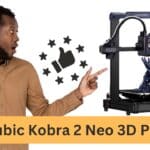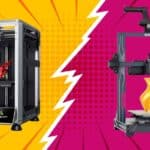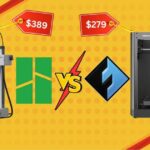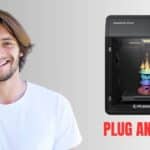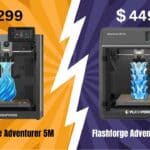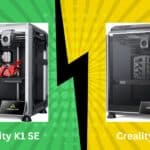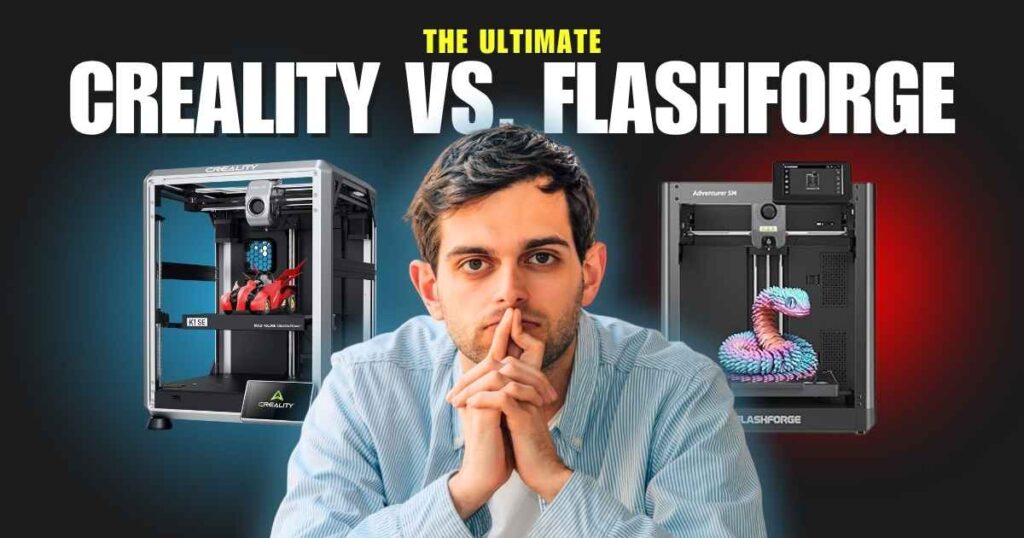
3D printing is no longer just for experts—it’s now accessible to hobbyists, beinners, and creators looking for affordable, high-quality machines. In the Creality K1 SE vs Flashforge Adventurer 5M comparison, we’re diving into two top budget 3D printers that deliver blazing-fast speeds and impressive features without breaking the bank. Both hit 600mm/s, making them ideal for high-speed 3D printing, but each has unique strengths. Whether you’re crafting home decor, prototyping, or teaching kids, this guide compares specs, pros, cons, and user experiences to help you pick the best CoreXY 3D printer for your needs.
Affiliate Disclosure
We participate in Amazon affiliate programs, earning fees from qualifying purchases via links at no extra cost to you. It’s how we keep this blog rolling and my 3D printers buzzing with fresh filament for reviews like this one!
Check out our guide to choosing a 3D printer in 2025 for more tips.
Creality K1 SE vs Flashforge Adventurer 5M
The Creality K1 SE vs. Flashforge Adventurer 5M showdown highlights two leading budget 3D printers designed for different users. The Creality K1 SE offers a larger build volume and higher nozzle temperature, perfect for those experimenting with diverse filaments like ABS. The Flashforge Adventurer 5M, with its fully automatic leveling and optional enclosure, is a beginner’s dream, ideal for temperature-sensitive materials. Both excel in high-speed 3D printing, but which is the best budget 3D printer for you? Let’s break it down with detailed specs, real user feedback, and a tool to customize your choice. Explore more budget options in our best beginner 3D printers of 2025.
Detailed Specs
Creality K1 SE Specs
The Creality K1 SE is a high-speed, budget-friendly 3D printer built for versatility and performance. Here’s what you get:
- Price: $249 (Amazon)
- Build Volume: 220 x 220 x 250 mm
- Print Speed: Up to 600mm/s
- Max Nozzle Temperature: 300°C
- Max Bed Temperature: 100°C
- Auto-Leveling: One-tap calibration
- Connectivity: WiFi, USB
- Software: Creality Slicer, Cura, Repetier-Host, Simplify3D
- Filament Compatibility: PLA, ABS, PETG, TPU
- Enclosure: Open-frame
- Other Features: CoreXY system, quick-swap tri-metal nozzle, open-source Creality OS
The K1 SE is a standout among budget 3D printers, offering flexibility for various 3D printing projects. Learn about filament options in our filament compatibility guide.
Flashforge Adventurer 5M Specs
The Flashforge Adventurer 5M prioritizes ease of use and quality, making it ideal for beginners. Here’s the rundown:
- Price: $259 (Amazon)
- Build Volume: 220 x 220 x 220 mm
- Print Speed: Up to 600mm/s
- Max Nozzle Temperature: 280°C
- Max Bed Temperature: 110°C
- Auto-Leveling: Fully automatic
- Connectivity: WiFi, USB
- Software: Orca-Flashforge, compatible with OrcaSlicer
- Filament Compatibility: PLA, ABS, PETG, TPU, PLA-CF, PETG-CF
- Enclosure: Optional kit
- Other Features: CoreXY system, dual-fan nozzles, vibration compensation
The 5M is a user-friendly choice for high-speed 3D printing, especially for those new to the craft. See compatible accessories in our Flashforge Adventurer 5M accessories guide.
Pros and Cons
Creality K1 SE
The Creality K1 SE shines in the budget 3D printer market. Here’s why it’s great and where it falls short:
- ✅ Lightning-Fast Speeds: Hits 600mm/s, among the fastest budget 3D printers.
- ✅ High Print Quality: Delivers crisp, detailed prints consistently.
- ✅ Budget-Friendly Price: At $249, it’s a steal for a CoreXY 3D printer.
- ✅ Software Flexibility: Works with multiple slicers like Cura and Creality Slicer.
- ✅ Easy Maintenance: Quick-swap tri-metal nozzle makes upkeep a breeze.
- ❌ No Enclosure: Open-frame design isn’t ideal for ABS or temperature-sensitive filaments.
- ❌ Software Limits: Some slicers lack full support, relying on Creality Print.
- ❌ Quality Control Issues: Some users faced voltage setting problems in the US.
Grab the K1 SE Now Before Prices Rise!
Flashforge Adventurer 5M
The Flashforge Adventurer 5M is a strong contender for budget 3D printers. Here’s what it offers and its drawbacks:
- ✅ Blazing Fast: Matches the K1 SE at 600mm/s for high-speed 3D printing.
- ✅ Top Print Quality: Dual-fan nozzles ensure precise, high-quality results.
- ✅ Fully Automatic Leveling: Hassle-free setup, perfect for beginners.
- ✅ Optional Enclosure: Great for printing ABS and other temperature-sensitive materials.
- ✅ Remote Monitoring: Flash Maker app lets you track prints from anywhere.
- ❌ Noisy Operation: Fans and motors are loud during printing.
- ❌ Software Glitches: Early software issues, though updates are improving.
- ❌ Slightly Pricier: $259, a bit more than the K1 SE.
Our Experience
Creality K1 SE Performance
Our hands-on time with the Creality K1 SE was impressive, with a few hiccups:
- Setup and Speed: Setup was straightforward, and it printed five times faster than older models like the Ender 3, producing sharp, high-quality prints.
- Connectivity: WiFi worked seamlessly with Creality Print, making file transfers easy.
- Challenges: The default 230V setting needed switching to 115V for US use, causing initial confusion. Compatibility with slicers like Cura was limited, requiring third-party software tweaks, which added a learning curve.
- Calibration Issues: Calibration was simpler than older models, but the first print failed due to filament spillage in the extruder. A replacement unit had a temperature sensor issue after two months, though support resolved it quickly.
The K1 SE is a solid budget 3D printer, but voltage and software quirks require attention. For maintenance tips, see our 3D printer maintenance guide.
Flashforge Adventurer 5M Usability
The Flashforge Adventurer 5M stood out for its ease of use:
- Speed and Accuracy: Four times faster than older printers, it passed tolerance tests without tweaks, delivering excellent print quality.
- Leveling and Adhesion: Fully automatic leveling was flawless, with strong bed adhesion and easy part removal post-print.
- WiFi: OrcaSlicer’s WiFi support made file transfers smooth and convenient.
- Drawbacks: The printer was very loud, with hotend fans and motors disrupting quiet environments. The rear filament holder caused filament to fall off unnoticed, leading to failed prints. Changing filament was tricky, with clogs requiring manual fixes.
- Long-Term Use: After months, it remained reliable, with easy filament swaps via the runout sensor. However, the touch screen was finicky, and the default-disabled runout sensor was an odd choice.
The 5M is a beginner-friendly budget 3D printer, though noise and filament handling are drawbacks. Check out our review of the Adventurer 5M for more insights.
Comparison Table
Here’s how the Creality K1 SE vs. Flashforge Adventurer 5M compare side by side:
| Feature | 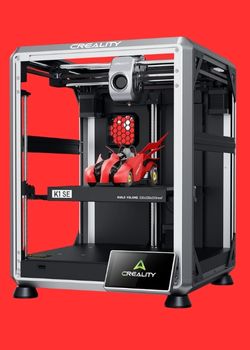 Creality K1 SE Creality K1 SE | 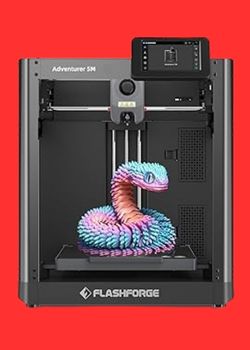 Flashforge Adventurer 5M Flashforge Adventurer 5M |
|---|---|---|
| Price | $249 | $259 |
| Build Volume | 220x220x250mm | 220x220x220mm |
| Print Speed | 600mm/s | 600mm/s |
| Max Nozzle Temp | 300°C | 280°C |
| Max Bed Temp | 100°C | 110°C |
| Auto-Leveling | One-tap | Fully automatic |
| Enclosure | No | Optional kit |
| Software Flexibility | High (multiple slicers) | Medium (improving) |
| Filament Compatibility | PLA, ABS, PETG, TPU | PLA, ABS, PETG, TPU, CF |
Which One Should You Pick?
Deciding between the Creality K1 SE vs. Flashforge Adventurer 5M comes down to your specific needs:
- For Beginners: The Flashforge 5M’s fully automatic leveling and optional enclosure make 3D printing effortless, perfect for those new to the hobby.
- For Speed: Both printers hit 600mm/s, excelling in high-speed 3D printing for quick results.
- For Build Volume: The K1 SE’s 250mm height edges out the 5M’s 220mm, ideal for taller prints.
- For High-Temperature Filaments: The K1 SE’s 300°C nozzle is better for ABS and other demanding materials.
- For Enclosure Needs: The 5M’s optional enclosure kit supports temperature-sensitive filaments like ABS.
- For Software Flexibility: The K1 SE supports multiple slicers, giving advanced users more control.
- For Community Support: Creality’s larger community offers more online resources and forums.
Both are exceptional budget 3D printers. Use the interactive tool above to find the best fit for your 3D printing projects! For more printer comparisons, check out our Flashforge Adventurer 5M vs. Creality K1C review.
Rating Table
Here’s how the Creality K1 SE vs. Flashforge Adventurer 5M rate across key categories:
| Category | Creality K1 SE | Flashforge Adventurer 5M |
|---|---|---|
| Print Quality | ★★★★☆ 4.5/5 | ★★★★☆ 4.5/5 |
| Ease of Use | ★★★★☆ 4.0/5 | ★★★★☆ 4.5/5 |
| Speed | ★★★★★ 5/5 | ★★★★★ 5/5 |
| Value for Money | ★★★★☆ 4.5/5 | ★★★★☆ 4.5/5 |
| Software and Support | ★★★★☆ 4.0/5 | ★★★☆☆ 3.5/5 |
Why These Ratings?
- Print Quality: Both deliver high-quality prints with crisp details, as confirmed by our tests and reviews .
- Ease of Use: The 5M’s fully automatic leveling gives it a slight edge for beginners.
- Speed: Both are top-tier CoreXY 3D printers, reaching 600mm/s for high-speed 3D printing.
- Value for Money: The K1 SE’s lower price and the 5M’s user-friendly features make them excellent budget 3D printers.
- Software and Support: Creality’s broader slicer support and larger community outshine the 5M’s initial software hiccups.
For more on enhancing print quality, see our best slicing software for 3D printing.
FAQs
Which printer is better for printing flexible filaments like TPU?
Both handle TPU well, but the K1 SE’s direct drive extruder offers better control for flexible filaments, based on our experience. Learn more about filament choices in our TPU filament guide.
Can both printers handle high-temperature filaments like ABS and PETG?
Yes, both support ABS and PETG. The K1 SE’s 300°C nozzle has a slight advantage for tougher materials, per our tests. See our PLA vs. ABS vs. PETG comparison.
Which printer has better community support and resources?
Is there a significant difference in print quality between the two?
Both produce high-quality prints with no major differences, as seen in our experience and user reviews.
Which printer is more suitable for educational settings?
The 5M’s automatic leveling and optional enclosure make it ideal for schools . Check out our best 3D printers for kids and teens.
Which printer is quieter?
The K1 SE is quieter, as the 5M’s fans and motors are noticeably loud during operation, per our experience. Explore noise reduction solutions in our 3D printer enclosures guide.
Conclusion
Flashforge Adventurer 5M
Pros
- Affordable at just $259
- Ultra-fast 600mm/s printing speed
- Fully automatic leveling for easy setup
- Supports PLA, ABS, PETG, TPU, and carbon-fiber filaments
- Optional enclosure for temperature-sensitive materials
Cons
- Smaller 220x220x220mm build volume
- Noisy operation from fans and motors
- Early software glitches, though improving
Creality K1 SE
Pros
- Budget-friendly at $249
- Lightning-fast 600mm/s printing
- High-temp 300°C nozzle for ABS and more
- Larger 220x220x250mm build volume
- Supports multiple slicers like Cura and Creality Slicer
Cons
- No enclosure, less ideal for ABS
- Slicer compatibility can be limited
- Some units had voltage setting issues



